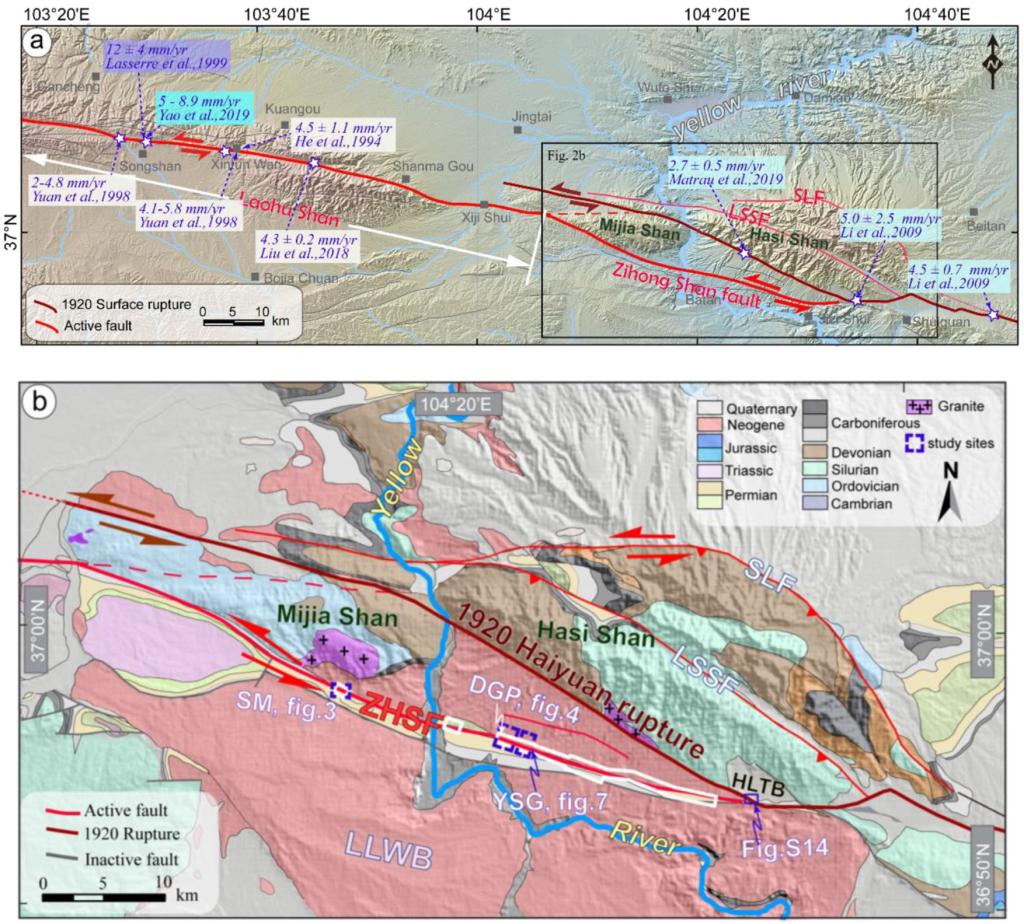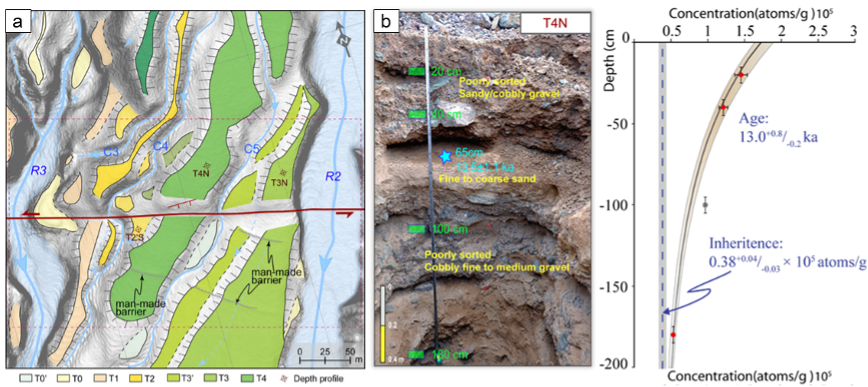Strike-slip faults often consist of linear segments separated by geometrically complex zones consisting of stepovers, lateral branching, or bends. Quantifying the slip rate of each fault strand in an area with complex fault geometry is key to understanding how deformation is accommodated along different sections of a large strike-slip fault. The Haiyuan fault, one of the longest strike-slip faults of the Tibetan Plateau, has developed a multi-stranded complex fault geometry along the Hasi Shan restraining bend. Here, studying the poorly-documented left-lateral strike-slip Zihong Shan fault strand provides critical insight into strain partitioning between fault strands along the complex Haiyuan strike-slip fault system. Using geomorphologic data together with dating constraints, including 10Be depth profile and OSL dating techniques yields a geological slip rate of 1.9 ± 0.6 mm/yr since ∼13 ka along the Zihong Shan fault. The minimum total horizontal slip rate across the entire Hasi Shan restraining bend is thus 4.1 ± 0.6 mm/yr. This value is slightly less, although consistent than rates obtained farther east and west along the Haiyuan fault. However, the vertical deformation of different strands at the Hasi Shan restraining bend should not be overlooked and could make a difference. The seismic hazard along the Zihong Shan branch might be greatly underestimated.

Figure 1. (a) Tectonic setting of the study area and location of slip rates from previous studies along the Laohushan section and the Haiyuan fault (in the narrow sense). (b) Geological and structural map of the Mijia Shan-Hasi Shan area.
(a)

Figure 2. Detailed geomorphic interpretation of the Dougou Ping site (a), photos with detailed stratigraphic observations (b), and exposure age constraints derived from sand samples with cosmogenic radionuclide depth profiles (c).
These findings were published in the journal of JGR-Solid earth. The first author and corresponding author are Wenqian Yao and Prof. Jing Liu from Tianjin University, respectively. This study was supported by the National Natural Science Foundation of China (Nos. U1839203, 41802228) and the State Key Laboratory of Earthquake Dynamics of China (LED2017A01). YK was partly funded through ANR project DISRUPT (ANR-18-CE31-0012).
Article Information: Yao, W.*, Liu-Zeng, J.*, Klinger, Y., Wang, Z., Shao, Y., Han, L., et al. (2022). Late Quaternary slip rate of the Zihong Shan branch and its implications for strain partitioning along the Haiyuan fault, northeastern Tibetan Plateau. Journal of Geophysical Research: Solid Earth, 127, e2021JB023162.
Please find the full text with the link: https://doi.org/10.1029/2021JB023162